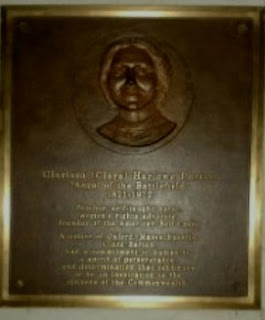NPR Report: Over 200,000 Unsolved Murders in the United States Since 1980
According
to a March 30, 2015 National Public Radio story, “Open Cases: Why One-Third of
Murders In America Go Unresolved,” by Martin Kaste, criminologists estimate
that at least 200,000 murders have gone unsolved in the United States since the
1960s. There are several challenges that law enforcement officials encounter
when trying to solve murder investigations.
1.
Prosecutors might want clear-cut investigations that can lead to plea bargains.
2.
A pervasive “no snitch” culture (in particular in minority communities).
3.
Poor communication between law enforcement and the general public.
4.
Insufficient staffing/limited resources
5.
Prioritization of cases
University
of Maryland criminologist Charles Wellford suggests in the NPR story that the
attention given to certain murder investigations depends on
prioritization. “Take for example,
homicides of police officers in the course of their duty…they’re frequently
done in communities that generally have low clearance rates… They’re
stranger-to-stranger homicides; they [have] high potential of retaliation [for]
witnesses.” Wellford also says: “Those
[uncleared] homicides tend to occur in poor communities, minority
communities. What is the impact of an
unsolved homicide when those unsolved homicides are primarily in the very
communities [where] we’re trying to build stronger relationships with law
enforcement?”
In
Virginia, the Richmond Police Department has drastically improved the rate at
which it solves open murder cases in the city.
The city of Richmond’s police department has become a model for other
police departments nationwide to follow in terms of solving homicides.
Nationwide,
police do not make an arrest in more than 1/3rd of homicides, according
to a January 19, 2015 Scripps News article
by Thomas Hargrove. Several major
metropolitan police departments have numerous cold cases. Atlanta, GA has about 1,800 unsolved homicide
cases dating back to 1965; Phoenix, Arizona has approximately 2,400 unsolved
cases; and Cleveland, Ohio has about 2,100 unsolved murder cases.
“The
numbers of murders have increased so substantially over the years that the cold
cases are overburdening many police departments. Active duty detectives have a never-ending
run of homicides. To work older cases,
they need some sort of support. It’s a
question of economics and of having sufficient numbers of personnel so that our
people can do the routine policing on the streets,” says Paul Marino – a
Florida attorney and a retired supervisor at the Hillsborough Sheriff’s Office.
With
over 200,000 unsolved homicides in the United States over the past several
decades, there are thousands of families who have been deprived the chance to
know who has murdered their family member or friend. Regardless of the character or life
circumstances of the murder victim, we as a society have an obligation to
successfully locate and prosecute people who commit murder. Below, I have recommendations to reduce the
number of unsolved homicides that currently exist in the United States:
1.
Create a statewide/national inventory of unsolved homicides cases.
2.
In light of recent protests in cities such as: Baltimore, Ferguson, and
Milwaukee, improve communication between police departments and
communities. Dismantle the “no snitch”
mentality and increase police accountability and transparency.
3.
Introduce a public awareness campaign regarding bringing information forward
about homicide cases.
4.
Incentivize solving homicide cases. (Commendations for police officers and community
members, tax breaks, promotions, financial rewards).
5.
Re-evaluate recruitment efforts/best practices for police departments
nationwide.
6.
Reduce bureaucratic red tape for cities with high murder rates.


Comments
Post a Comment